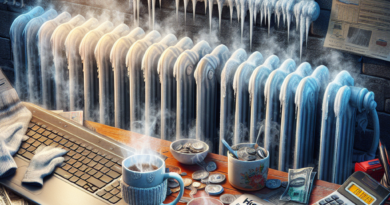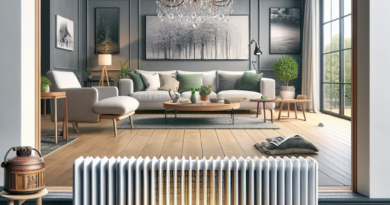Cold radiators and not heating at the bottom, the reasons and how to solve it
Why doesn't a radiator heat up and stay cold or only partially cold? Every year, when turning on the radiators, there are those who forget the fundamental steps to allow the radiator to function properly.
In this period, later than previous seasons, the radiators are turning on in Italy.
There are several tips on what to do before turning on a heating system with radiators.
One of the reasons why a radiator does not heat or does not heat enough and uniformly over the entire surface is precisely not having followed simple pre-ignition steps.
Here's what we know about the correct functioning of heating and radiators and how to make them more efficient.
read also Radiators always on or only when it's cold, the best solution to consume less Why are radiators cold in the lower part? Radiators, turned on in the colder season, can present various problems.
These include not heating the surface well or completely.
This is a problem that limits the heating of the house, but does not reduce consumption.
In fact, if you feel cold areas on the radiator, especially at the bottom or at a medium-low height, it needs to be cleaned.
In fact, the most common cause is the presence of mud.
Over time, radiators accumulate various sediments and these, with a muddy consistency given the presence of water, create blockages inside the flow channels of the radiator.
The water therefore cannot move and does not heat the entire structure.
read also How much gas and methane radiators consume Why does sludge form in radiators? Inside the radiators water flows around the heating system.
The combination of different elements such as iron, steel and water can cause the formation of different waste elements such as magnetite or rust, but also dirt and encrustations.
All this dirt favors the formation of mud, which accumulates in the lower part and prevents the water from reaching all areas, which is why it remains cold and does not heat up.
How to clean a cold radiator? If a radiator has a cold area at the bottom, you can contact a specialist.
For those who are more familiar with "do it yourself" you can also try the independent repair route.
This involves cleaning the radiator, i.e.
washing the radiator.
There are several guides for cleaning the radiator.
In a few steps it can be summarized as follows: drain the dirty water from the radiator; remove the radiator from the wall; rinse the radiator; connect a hose to the radiator valve inlet and open it to maximum power; tap on the radiator inlet with a rubber mallet to make sure all the dirt has been removed; -*repeat the process at the opposite end of the radiator until clean, clear water flows.
Warning: if more than one radiator in the heating system has a cold lower part, it is necessary to ask for help from a technician.
In fact, washing all radiators can be a complicated and rather time-consuming operation.
Unlike "do it yourself", experts can avoid detaching the radiator from the wall and possible collateral damage.
read also How much you save by closing (some) radiators What should you do before turning on the radiators? To avoid problems with radiators, before switching on it is necessary to carry out a few simple steps.
The main ones are to vent the radiators, that is, eliminate the air bubbles that have formed during the period of inactivity and let the water out.
Remove all dirt, which otherwise risks being raised by the heat emitted.
Finally, identify any malfunctions, such as a radiator that does not heat well, that makes noises or that leaks water, or that remains hot even when it has exceeded the set temperature.




